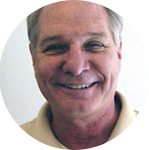About This Project
Humans are genetically complex, but mice are inbred. Thus, many past tests of therapies in mice have failed in clinical trials with humans. Using a panel of genetically diverse mouse strains can remedy this problem. We have a good start but we need to sequence information on more strains. Let's help scientists unlock the mouse genome in 35 mouse strains to speed individualized medicine to treatment.Ask the Scientists
Join The DiscussionWhat is the context of this research?
Armed with the genome (the genetic code locked in our DNA), scientists are trying to translate genetic information into treatments and cures. However, our progress has not been as fast as many hope. The reason is that we thought 1 gene = 1 trait. Unfortunately, the diseases that are cause by a single gene are relatively rare (like cystic fibrosis).
Most common diseases are complex…that is controlled by many genes that must work together to prevent a disease from happening. It often takes dozens or hundreds of genetic variants to be inherited to produce adverse health outcomes. This makes good sense if you think about…if our health was balanced by one gene we would be at great risk if ever that gene was damaged. This make applying the human genome to individual medicine a steep challenge
What is the significance of this project?
So how to fix this problem?
Mice are powerful scientific tools. Of the 104 Nobel Prizes in Medicine, 35 involved discoveries using mice.
The human and mouse genome are 97% similarly. So, once a trait is mapped in mice it can be translated to humans.
One problem: mice are inbred and people are not. So a single inbred mouse strain only contains some of diverse genetic code. However, many inbred strains exist, so with detail genetic information on say 35 strains we could examine a give trait in a few strains and quickly map genes that control that disease.
Fortunately we are not at square one, we now have next generation sequencing. This is the latest and most improved and cheapest way to obtain whole genome data. Also what was $3billion now costs $2500 and what took years now takes 2wks.
What are the goals of the project?
So how can you help?
Currently we have genome information on 19 inbred strains that were sequenced by the Wellcome Trust Sanger Institute. You can visit their website at: http://www.sanger.ac.uk/resources/mouse/genomes/.
Also, 8 more strains are on their way (see: https://ccr.cancer.gov/Laboratory-of-Cancer-Biolog... ).
Once a strain has been sequence the information can be used for many, many years by many, many scientist to unlock the genome.
Our goal is 35 and we now have 27! Please note once we have this information we will deposit all the data at a public accessible websites (both at Sanger and at the Mouse Genome informatics database at Jackson Laboratory). These sites will be used by hundreds of scientists, college students, and physicians around the world.
Budget
We will sequence 2 more mouse strains to demonstrate our capability and the feasibility. Your donation will be used for the cost of materials and the use of a sequencer to obtained sequence information only. Every dollar will be spent on sequencing alone. We will donate the time of our scientists and technicians to analyze and compile the genomes. We will use the cheapest method, which current means about $2500/genome. So our goal is $5000 for 2 more genomes.
Meet the Team
Team Bio
Dr Leikauf’s research interests include the role of gene-environment interactions in controlling pulmonary responses to inhaled pollutants and the use of genomics in the diagnosis and treatment of environmental lung diseases. He has served on numerous advisory committees including chairing NIH Study Sections and EPA Scientific Review Panels. He has served as a member of the Nat Inst Environ Hlth Science’s Advisory Council and The National Academies’ Comm. on Applications of Toxicogenomics Technologies to Predictive Toxicology. He is an Assoc. Editor of the Am J Respir Cell Mol Biol and has served on other editorial boards.He has published >30 book chapters and reviews on hazardous chemicals and respiratory toxicology, and over 100 peer-reviewed scientific manuscripts. He earned his A.B. in biological science (UC Berkeley), Ph.D. in environ. health sciences (NYU), and completed postdoctoral training at the Cardiovascular Research Institute (UCSF).
Additional Information
http://videolike.org/view/yt=stuhGPtL;wrProject Backers
- 38Backers
- 47%Funded
- $2,340Total Donations
- $61.58Average Donation
